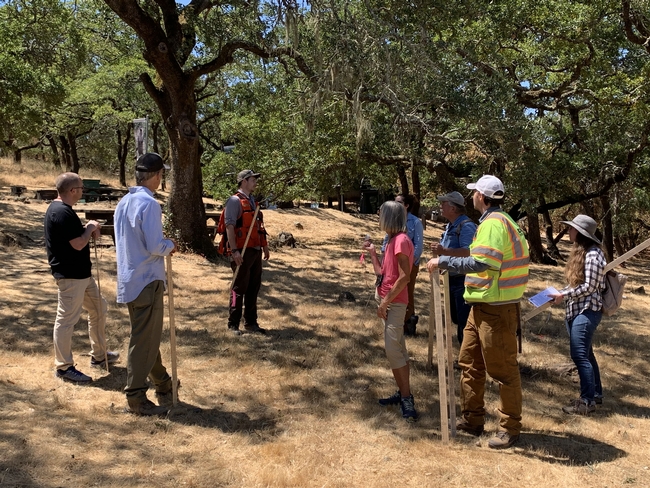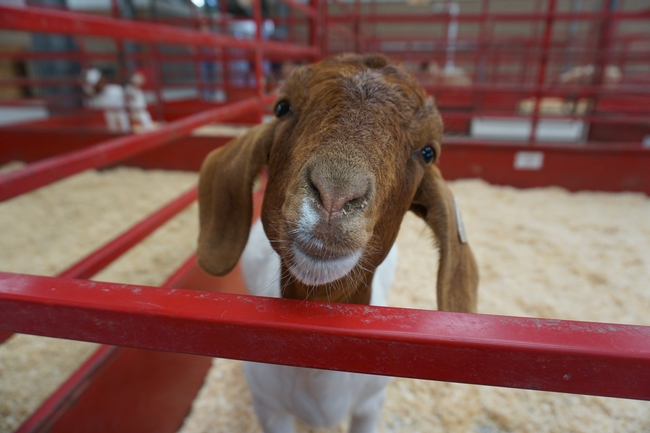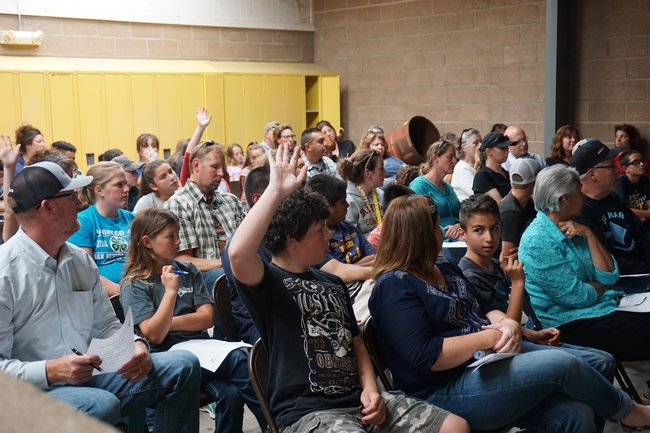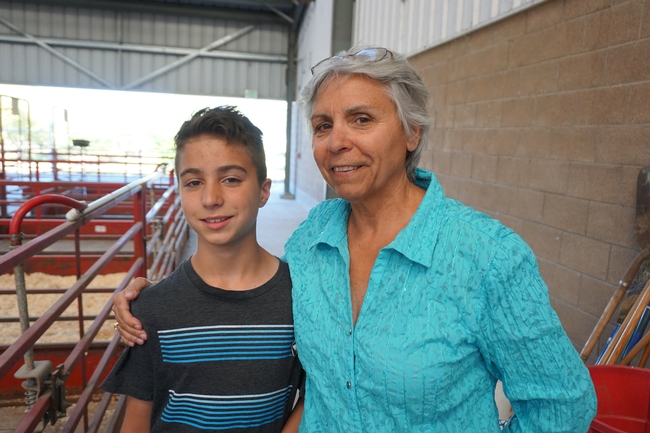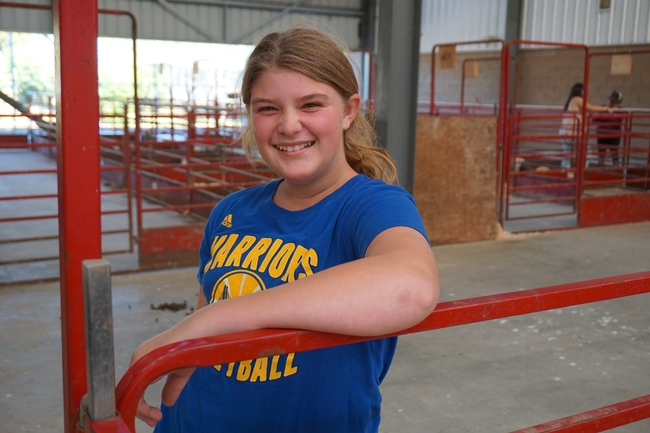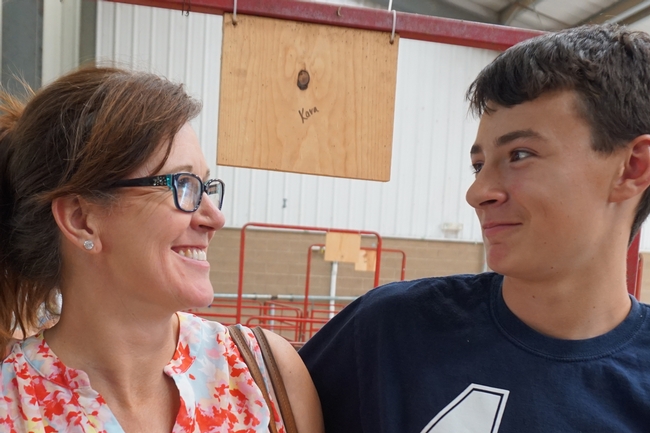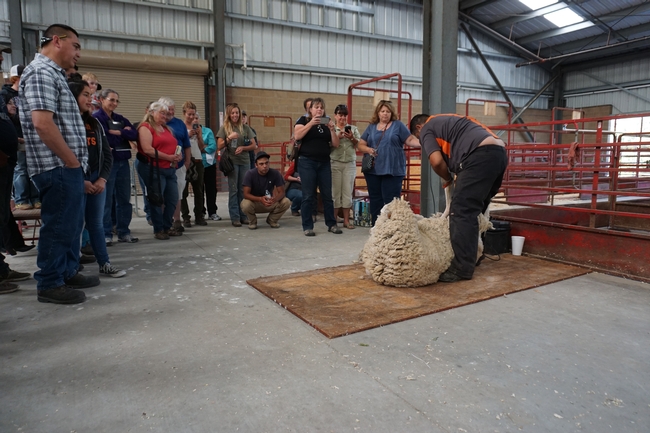Posts Tagged: Ingram
Workshops for forest landowners come to Solano, Sacramento counties, beginning July 18
Free forester site visit for landowners who complete workshop series
Forest landowners in Solano and Sacramento counties are encouraged to learn about their forests and connect with natural resource professionals in their areas during the next Forest Stewardship Workshop Series from University of California Cooperative Extension, July 18 to Sept. 12. These programs can be essential for small landowners who seek to make their forests resilient against wildfire.
Upon completing the nine-week series of virtual and in-person sessions, landowners also will be eligible for a free site visit from a local Registered Professional Forester (RPF), Certified Range Manager or California Certified Burn Boss.
Content is applicable to all forest landowners regardless of where their forest is located and will highlight talks from the local Resource Conservation District, UCCE forestry advisors, CAL FIRE, Natural Resources Conservation Service, and other natural resources community leaders. Registration fee is $60 for the workshop series, which will address common concerns among California landowners, including but not limited to:
- Forest ecology and vegetation management
- Financial planning and cost-sharing opportunities
- Oak woodland management and targeted grazing
Past participants have rated the workshop series highly, with 98% of 2022 participants rating the series overall as excellent or very good. In addition, 94% of past participants reported greater awareness of applying for and using cost-sharing programs.
A past participant has described the workshops as very accessible, saying “they (UCCE) broke things down into small pieces, [and] staff were always an email away.” In seeking to make an otherwise large amount of content approachable, UCCE hopes that landowners come away with a holistic understanding of the management process.
The workshop will take place in a hybrid setting, with classes taking place weekly online over Zoom. Participants will also engage in practical learning through a field day, where they can meet other cohort members and UCCE professionals at an outdoor field location.
At the conclusion of the workshop series, landowners will be equipped with the knowledge and network that will empower them to manage their forests in ways that meet their specific goals and objectives.
Community members in Sacramento and Solano counties interested in forest management, forest and fire ecology, and related topics are encouraged to register: https://surveys.ucanr.edu/survey.cfm?surveynumber=28675.
Forest landowners across California can learn about upcoming workshops in their areas, and also find additional resources, publications and videos: https://ucanr.edu/sites/forestry/Stewardship/.
New videos demonstrate techniques and tools to survey forestland trees
Forestland owners can learn how to survey the trees on their property from four new videos produced by UC Cooperative Extension, setting them on a course for sustainable management of their forestland. The videos are available on the UC ANR YouTube channel (http://youtube.com/UCANR).
Learning the tools and techniques used for centuries by professional foresters and research scientists allows private forest owners to collect data that paints a picture of the land and trees' current condition.
“Whether it's managing to reduce wildfire, control invasive species, protect the nature beauty or maximize timber harvest, you need to know what you have so you can select the right actions to achieve your goals,” said Kimberly Ingram, UC Cooperative Extension forest stewardship education academic coordinator.
While about two-thirds of California's 33 million acres of forests are public lands held by state and federal government agencies, the rest is in private hands. In 2019, with funds from CAL FIRE, UCCE launched a program to reach out to the 87,000 private landowners who manage portions of California's forests.
Before the COVID-19 outbreak, three-day field workshops were offered to groups of forest owners to help them develop a plan to improve and protect their forestlands in an ecologically and economically sustainable manner. Because of the pandemic, alternative approaches are being used, including video training, online workshops and limited outdoor field days in locations where social distancing is feasible.
“We're using the flipped classroom method,” Ingram said. “The learner reads and watches videos beforehand and then, when they come to the online classroom and field day sessions, we're delving into real-world examples.”
Kestrel Grevatt, a member of the Grizzly Corps, an AmeriCorps program developed by UC Berkeley that addresses community needs related to climate change, was enlisted to create videos that demonstrate forest measurement practices.
The videos are for landowners who participate in the workshop series and for other forest owners who wish to begin collecting data on their own.
Susie Kocher, UCCE forestry and natural resources advisor in the Central Sierra Cooperative Extension office, narrates and conducts demonstrations in each of the videos. They cover the following topics:
Tree measurement tools
Learn the basics of forest inventory and what measurements you need to quantitatively represent your forest. It covers the usage of a diameter tape, Spencer logger's tape and Biltmore stick (or CA tree stick).
Using a clinometer to measure tree height
A clinometer is a simple tool which can be used to measure heights. In this video, you will learn how to use a clinometer to accurately measure tree height as part of a forest inventory.
Plot establishment tools
Learn how to use a compass, reel fiberglass tape and cruise vest to establish plots. The video covers how to think about your own inventory system and what you will want to take with you when you head into the woods.
Plot layout and inventory system
Learn what it looks like to collect plot data. This video includes a review of plot layout, the measurements and observations to note, and how sample data can represent your entire forest.
Three more forest stewardship workshops have been scheduled:
Feb. 2 - April 13, tribal-focused stewardship workshop: Online and at the Big Sandy Rancheria. Registration now open.
March 22 - May 27, online and in Humboldt County. Registration now open.
April 21 - June 16, online and in San Bernardino County. Registration opening soon.
Workshop registration is $60. Breakfast and lunches are provided for in-person field days. Register at http://ucanr.edu/forestryworskhopregistration.
For more information on forest management and forest stewardship workshops visit the Forest Research and Outreach website at http://ucanr.edu/forestry.
New advisors, specialists and a director join UC Agriculture and Natural Resources
Expanding its expertise in water, soil, pest management, forestry and small farms, five new academics and a county director have joined the ranks of UC Cooperative Extension.
Kim Ingram
Forest stewardship education academic coordinator
UC Cooperative Extension Central Sierra - Amador, Calaveras, Tuolumne and El Dorado counties
In November 2019, Kim Ingram was named the academic coordinator for forest stewardship education in UC Cooperative Extension's Central Sierra office, which includes Amador, Calaveras, Tuolumne and El Dorado counties.
Previously, Ingram was an academic human resources business partner in UC ANR's Human Resources, leading academic recruitments, analyzing data and managing the academic merit and promotion process. Ingram also served as a community education specialist for the UC Sierra Nevada Adaptive Management Project and Sierra Nevada Watershed Ecosystem Enhancement Project. In that role, she planned, managed and implemented collaborations between UC, agencies, local communities and stakeholders, developed training curriculum and facilitated meetings, workshops and events related to forestry and fire issues in the Sierra Nevada. She is an instructor of record for the UC California Naturalist Program and published a “Natural History of the Sierra Nevada” for use in California Naturalist Program trainings.
Ingram earned a master's degree in education, adult education and training from Colorado State University. She also holds a bachelor's degree in political science with a minor in environmental ethics from Humboldt State University.
Ingram can be reached at kcingram@ucanr.edu.
Safeeq Khan
UC Cooperative Extension water and watershed sciences specialist
Based at UC Merced
Safeeq Khan joined UC ANR in October 2019 as a UC Cooperative Extension assistant water and watershed sciences specialist. His research focuses on understanding the interaction between climate and ecosystems to inform land and water management. He uses data-driven numerical models as a research tool to aid in the understanding of watershed systems. As a CE specialist, Khan will develop and carry out collaborative, multifaceted research and extension related to mountain hydrology and their linkage with downstream water uses statewide, with special attention to the Sierra Nevada-Central Valley watersheds.
Prior to joining UC ANR, Khan was a professional researcher and adjunct professor in the department of Civil and Environmental Engineering at UC Merced for five years. Khan brings more than 10 years of research, education and extension experience. He has published more than 35 peer-reviewed journal papers and book chapters, successfully secured several externally funded projects, and presented his work to a diverse range of audiences through digital and print media, workshops and conferences.
Khan has worked very closely with state and federal agencies, local landowners and nonprofit organizations, both in California and elsewhere. He has led several projects related to watershed management, from investigating the impact of non-native tree species and groundwater overdraft on streamflow in Hawaii to mapping hydrological vulnerabilities to climate change in the Pacific Northwest. More recently, his research has been focused on evaluating climate change and watershed restoration impacts on water and forest health and developing stakeholder-driven adaptive decision support tools. He serves as an associate editor for the journal Hydrological Processes. Khan is also a co-director of UC Merced's first Innovations at the Nexus of Food, Energy and Water Systems (INFEWS) grant that addresses connected wildland-storage-cropland subsystems in California.
Khan earned a Ph.D. in natural resources and environmental management from University of Hawaii at Manoa. He also holds a master's degree in agricultural systems and management from Indian Institute of Technology in Kharagpur, India, and a bachelor's degree in agricultural engineering from CSA University of Agriculture and Technology Kanpur, India. In addition to English, he is fluent in Hindi and Urdu.
Khan is based at UC Merced and can be reached at (209) 386-3623 and msafeeq@ucanr.edu. Follow him on Twitter @safeeqkhan.
Cindy Kron
Area integrated pest management advisor
UC Cooperative Extension in Sonoma, Napa, Mendocino and Lake counties
Cindy Kron joined UC Cooperative Extension as area-wide IPM advisor for Sonoma, Napa, Mendocino and Lake counties in September 2019.
Before joining UCCE, Kron studied the three-cornered alfalfa hopper as a research entomologist for USDA in their Crop Disease, Pests and Genetics research unit. She tested cover crop species as feeding and reproductive hosts of the three-cornered alfalfa hopper in addition to testing commercially available biocontrol agents against the different life stages of the treehopper. She collaborated with a UC Davis colleague to create a degree day model that predicts the ideal timing to implement cultural control measures with the greatest impact on treehopper populations.
Kron has conducted research on a variety of insects including a two-year vineyard study on the population dynamics of Virginia creeper leafhopper, western grape leafhopper and variegated leafhopper. For her dissertation, she investigated the biology and behavior of the three-cornered alfalfa hopper and their relationship with vineyards. She also studied the effects of temperature on the developmental rate of the invasive European grapevine moth and reared brown marmorated stink bugs for USDA fumigation studies.
“My experiences have motivated me to help growers, stakeholders and the industry solve agricultural pest management problems through applied research by identifying IPM strategies and tactics that are economically feasible and implementable while having the lowest environmental impact,” Kron said.
Kron earned her bachelor's degree in viticulture and enology, with a minor in agricultural pest management, and her doctorate in entomology at UC Davis.
She is based in Santa Rosa and can be reached at ckron@ucanr.edu.
Mallika Nocco
UC Cooperative Extension specialist in soil-plant-water relations
Based at UC Davis
Mallika Nocco joined UC ANR in September 2019 as a UC Cooperative Extension specialist in soil-plant-water relations, based at UC Davis. She earned her bachelor's degree in cultural studies/comparative literature and philosophy from the University of Minnesota-Twin Cities. After five years in the corporate world, Nocco decided to pursue her interest in soil, plants, and the conundrum of sustainable agriculture. She completed a master's degree in soil science and a Ph.D. at the University of Wisconsin-Madison in the Nelson Institute's Environment and Resources Program.
Nocco is based at UC Davis and can be reached at manocco@ucdavis.edu. Follow her on Twitter @mallika_nocco.
Karmjot Randhawa
Director of UC Cooperative Extension in Fresno, Madera, Kings and Tulare counties
Karmjot Randhawa joined UC ANR in September 2019 as the UC Cooperative Extension director for Fresno, Madera, Kings and Tulare counties.
In this newly created position, Randhawa is responsible for the coordination and overall operations of Cooperative Extension programs these Central Valley counties. Unlike traditional county director positions, Randhawa doesn't have academic research responsibilities, so she can focus on overseeing the educational and applied research programs and providing direction and leadership to the academic and support staff within the county extension programs.
Prior to joining ANR, the Central Valley native was the research translation operations manager at George Mason University's Center for Climate Change Communication.
“I look forward to increasing the visibility of UCCE by communicating the positive impacts realized by the people who live in the San Joaquin Valley and benefit from the research activities and contributions of these units,” Randhawa said.
Randhawa received her bachelor's and master's degrees in research psychology at California State University, Fresno, and received her MBA from Johns Hopkins University. She is currently completing the Climate Change and Health Certification Program at Yale University.
Randhawa is based in Fresno and can be reached at (559) 241-7514 and kgrandhawa@ucanr.edu.
Qi Zhou
UC Cooperative Extension assistant specialist for small farms in Santa Clara County
Qi Zhou joined UC ANR in September 2019 as a UCCE assistant specialist for small farms in Santa Clara County. She will work closely with project directors at UCCE Santa Clara to lead research and extension work related to food safety practices on small farms, beginning farmer education and Asian vegetable production.
Prior to joining UC ANR, Zhou conducted research on peach fruit production at Clemson University. At Huazhong Agricultural University, Zhou designed and conducted an experiment that identified the differences between flood-tolerant and flood-susceptible poplar seedlings. Zhou has published several scientific manuscripts and abstracts and given extension presentations.
Zhou earned a Ph.D. in plant and environmental sciences with a minor in statistics from Clemson University, South Carolina, a master's degree in horticulture and forestry from Huazhong Agricultural University, China, and a bachelor's degree in horticulture from Hunan Agricultural University, China. In addition to English, Zhou is fluent in Mandarin.
Zhou is based in San Jose and can be reached at (408) 282-3109 and qiizhou@ucanr.edu.
Raising sheep and goats for fun and profit
A 4-H sheep or goat project has something in common with ranchers raising animals for a living. In both cases, one objective is profit.
“Profit is not a dirty word,” said Dan Macon, UC Cooperative Extension assistant specialist in the UC Davis Department of Plant Sciences. “How many of you are using fair animals to save for college or buy a car? You're in business.”
Macon spoke at a Sheep and Goat Workshop June 13 for 4-H members, FFA students and local sheep and goat producers, organized by UC Cooperative Extension livestock and natural resources advisor Devii Rao. About 30 of the workshop participants represented the industry, 70 were young producers and family.
Macon discussed the direct and indirect costs of rearing animals, the optimal timing for breeding so lambs and kids will be weaned when grass is naturally abundant, and tactics for protecting sheep from predators.
“I call this, ‘Big dogs, hot fences and fast sheep,'” Macon said. “Someday I'm going to write a country song with that title.”
The big dogs are guardian animals that are not socialized to humans, but rather kept with sheep from the time they are tiny puppies. Donkeys and llamas can be effective guardians if the predators are coyotes and dogs.
UCCE advisor Roger Ingram covered the opportunity to manage rangeland with a flock of sheep or herd of goats. The concept is “targeted grazing.”
“Think of yourselves as grass and brush farmers with four-legged combines to harvest,” Ingram said.
He advised animal caregivers to learn to identify plants, as some are good for the animals, and some are not. For example, poison hemlock and milk weed are problem plants for certain animals.
Ten-year-old 4-H member Cody Watson attended the workshop with his grandmother Susan Gardner.
“Raising animals teaches responsibility and accountability,” Gardner said. “The kids learn where food comes from.”
Gardner was a 4-H member as a child, but when her children were growing up, she didn't have the income for property to house animals.
“It's fun,” Tobia said. “I'm there with all my friends.”
California black rail likes leaks
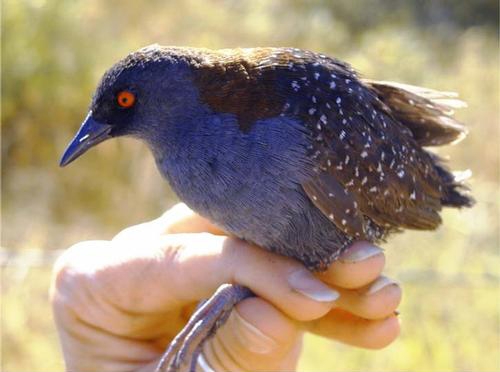
The rare bird species makes its home in marshes created in large part by leaky pipes, stock ponds, irrigation tailwater and unlined canals. Even the springs that support some habitat may rely on water flowing from leaky canals. In 1994, UC Agriculture and Natural Resources scientists found the small, red-eyed bird with the black breast and speckled black feathers at UC ANR's Sierra Foothill Research and Extension Center. Since its discovery, a group of scientists have been exploring the effects of water management and climate change on the bird in Sutter, Butte and Yuba counties.
California black rails, which can be heard more often than seen, largely depend on humans and irrigated agriculture to provide the shallow flowing water they use for habitat.

With the help of UC ANR Cooperative Extension advisors Glenn Nader and Roger Ingram, Huntsinger conducted a survey of 1,000 landowners in the three counties.
Property owners responding to the survey said the primary reason for maintaining ponds and wetlands is to reduce wildfire risk, but they also like the birds and wildlife that are attracted by wet areas. However, Huntsinger worries that the “accidental wetlands” may dry up as the drought increases the pressure on people to conserve water by fixing leaks and replacing canals built during the 19th century Gold Rush with pipes.
Most of the farmers and ranchers buy water from a water district so Huntsinger sees working with water districts as a key to the sustainability of wetlands for wildlife.
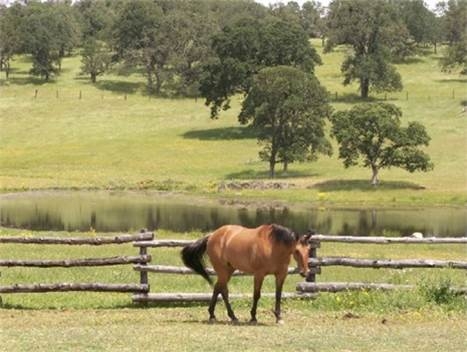
More and more, she says, it seems that we are facing tradeoffs between “goods”— saving water is good and preserving wildlife habitat is good. “We need flexibility and adaptation rather than all or nothing choices. After all, we are creating the future landscape of California,” Huntsinger said.
Huntsinger's study is just one facet of a California black rail study that involves scientists with different kinds of expertise.
Steve Beissinger, professor in the Department of Environmental Science, Policy and Management at UC Berkeley, has been studying black rail behavior for years and continues to monitor how many sites in the Sierra foothills the small birds use as habitat.
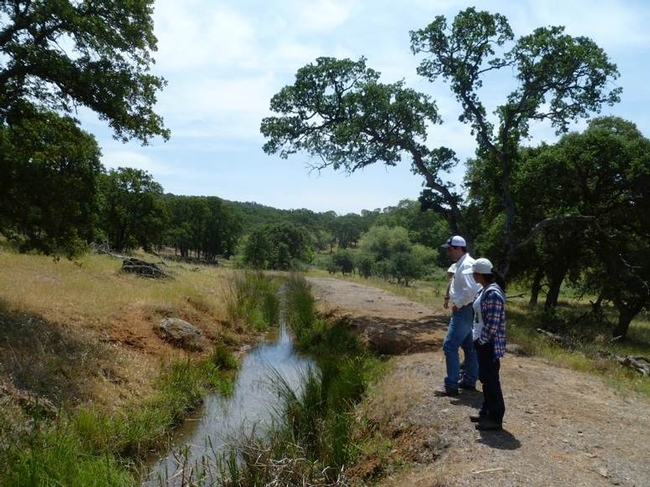
Marm Kilpatrick, assistant professor in the Department of Ecology and Evolutionary Biology at UC Santa Cruz, studies how concern about mosquito-borne West Nile virus may affect landowners' decisions to maintain wetlands.
“It is a novel ecosystem, offering habitat engineered by people and their livestock that happens to offer the black rail what it needs,” Huntsinger said. “We just don't know enough about conservation in this kind of situation. Managing traditional landscapes is common in Europe, but rare in the United States.”
For more information about the California black rail, see the California Agriculture article “California black rails depend on irrigation-fed wetlands in the Sierra Nevada foothills.”
Below, UC Berkeley graduate student Nathan Van Schmidt describes research at UC Sierra Foothill Research and Extension Center on how the rails cope with drought, seasonal hydrology regimes, and the rescue effect.
An initiative to maintain and enhance sustainable natural ecosystems is part of UC Agriculture and Natural Resources Strategic Vision 2025.
